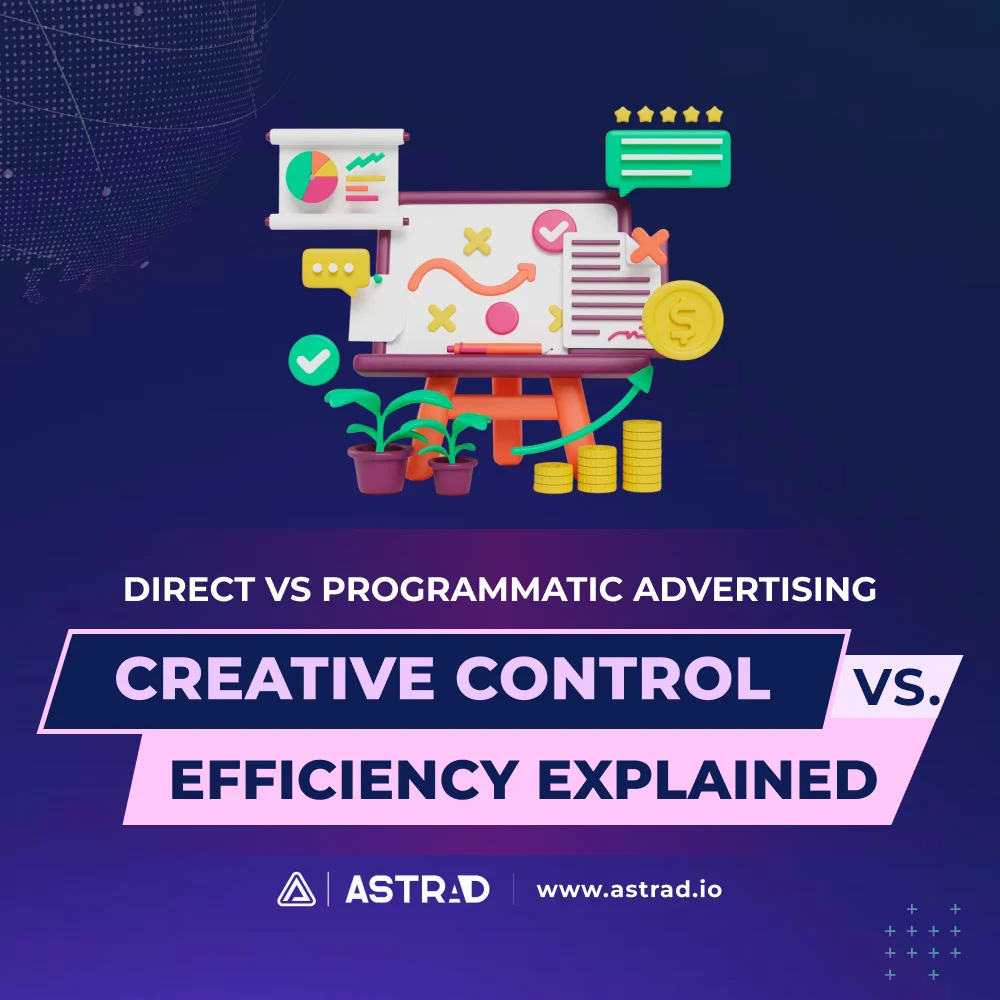Do you think offline marketing is as outdated as flip phones and dial-up internet? That now it’s all social media, influencers, and whatnot? Think again. Vinyl records are making a comeback, bell-bottom pants are in, and it’s hip to be square.
Offline attribution is once again becoming the trend your omnichannel strategy needs. In an era where digital dominates, blending the physical with all those bits and megabits is the game-changer you didn’t know you wanted—let alone needed. Let’s dive into why this fusion is essential for capturing the entire customer journey.
The Importance of Understanding Offline Sales Attribution in a Digital Age
Let’s dive into the why of this dance.
Offline vs. Online Attribution—Decoding the Difference
The world is obsessed with clicks, likes, and shares — our dopamine levels are hooked on our Meta feed. It’s easy to forget that not every customer interaction happens online. While online attribution tracks digital footprints, offline attribution captures those real-world moments—like the billboard you pass every morning or the in-store promotion that catches your eye. It captures that key moment where your storefront makes a dent in the customer’s brain.
Understanding the barriers that separate customers and the bridges that join them is vital. Distinguishing between online and offline marketing attribution is crucial for a complete picture of customer behavior.
Why Offline Attribution Matters More Than Ever
Consumers don’t live exclusively online or offline—they navigate seamlessly between both worlds. They have rich digital lives that complement their real-world experiences and vice versa. Which matters more depends on the individual.
Ignoring offline sales attribution means missing valuable data about how traditional marketing efforts influence purchases. Studies show that offline channels can drive significant online activity—blurring the lines more than ever. It’s a catch-22: you can’t have one without the other.
The Power of Offline Marketing Strategies Today
Old-School Marketing That's Still Rocking
Who said TV ads, radio spots, and direct mail are relics of the past? They’re like the classic rock of marketing—timeless and still capable of drawing a crowd. For example, one of the biggest ads for a financial service came out recently for reverse mortgages, featuring Tom Selleck.
It was such a massive hit that the cartoon Family Guy made a whole episode about it. TV ads, like other classic marketing methods, sell. From catchy jingles to eye-popping in-store displays, offline marketing efforts influence daily purchase decisions. Offline marketing attribution helps you understand which channels hit the right notes with your audience.
Offline Touchpoints That Seal the Deal
Ever found yourself buying something because of a store demo or a free sample? Offline touchpoints play a sneaky but significant role in nudging customers toward a purchase. These touchpoints are the sales world’s master manipulators—think Lex Luthor, only more devious.
They rely on tangible experiences—the difference between going to a bookstore to pick up the latest Dan Brown novel and buying it on your Kindle. Recognizing the impact of these touchpoints is essential for accurate offline sales attribution.
The Challenges—Navigating the Offline Maze
Let’s keep it real—offline attribution isn’t a walk in the park. Data fragmentation and complex attribution models can make it feel like piecing together a jigsaw puzzle without the box image. And you can’t seem to find the corner piece.
Different data sources, like POS systems and loyalty cards, don’t always play nicely together. Plus, measuring the direct impact of a billboard or a radio ad can be as elusive as catching smoke. It’s a challenge but one worth tackling to get a holistic view of your marketing efforts.
Bridging the Gap—Integrating Offline and Online Data
Techniques for Data Integration
So, how do you connect the dots? By integrating offline and online data through CRM systems and loyalty programs. It’s like merging two playlists to create the ultimate mixtape—more comprehensive and far more engaging. One that tells a story to its listeners—there’s a reason Bob Dylan’s “Tangled Up in Blue” is sandwiched between Bizet’s “Carmen” and Blondie’s “Maria.”
Techniques like unique promo codes, QR codes, or tracking phone numbers can link offline actions back to online profiles, enhancing your offline marketing attribution efforts.
Tools of the Trade—Tech That Makes It Happen
Enter POS systems, beacons, and other tech gadgets. These tools are the Sherlock Holmes of marketing—they help you gather clues about your customers’ offline behaviors and preferences. Beacons can track in-store movements, while advanced POS systems capture purchase data in real time. Leveraging these technologies enhances your ability to perform accurate offline sales attribution.
The Future—IoT, AI, and Big Data
With IoT devices, AI algorithms, and big data analytics stepping into the spotlight, offline attribution is getting a high-tech makeover. Imagine intelligent shelves that know when a product is picked up or AI that predicts purchasing behavior based on past interactions. The lines between online and offline channels are blurring faster than a viral TikTok dance, making omnichannel strategies more integrated than ever.
What's Next for Offline Sales Attribution
As technology evolves, expect even more innovative ways to track and analyze offline customer interactions. Augmented reality (AR) experiences, wearable tech, and advanced geolocation services are set to revolutionize how we understand offline sales attribution. And with Apple’s big push into spatial computing, the sky really is the limit.
Offline Attribution Is Here to Stay
Offline attribution isn’t just a nice-to-have—it’s a must-have for a John Wick-level omnichannel strategy. By embracing it, you’re not just keeping up with the Joneses—you’re setting the pace. So dust off those offline marketing tactics and watch your customer insights soar. Next steps? Start integrating your data streams, invest in technologies that bridge the offline-online gap, and revisit your attribution models to include both worlds.






